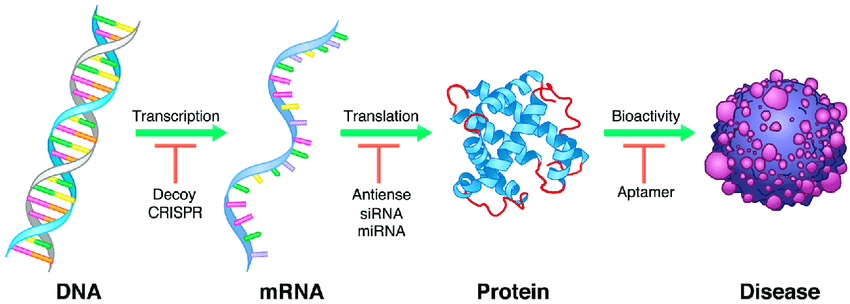Oligonucleotides: Essential Tools in Biotechnology
What are Oligonucleotides?
Oligonucleotides are short, single-stranded DNA or RNA molecules, typically composed of 13 to 25 nucleotides. They are the fundamental building blocks of nucleic acids and play a crucial role in various biotechnological applications. Oligonucleotides can be synthesized chemically or enzymatically and are designed to have specific sequences for targeted functions.

Structure and Composition
Oligonucleotides are composed of a sugar-phosphate backbone with attached nitrogenous bases: adenine (A), thymine (T), cytosine (C), and guanine (G) in DNA, or adenine (A), uracil (U), cytosine (C), and guanine (G) in RNA. The specific sequence of these bases determines the oligonucleotide's function and its complementarity to target sequences.
Synthesis of Oligonucleotides
Oligonucleotides are typically synthesized using solid-phase chemical synthesis methods, such as phosphoramidite chemistry. This process allows for the rapid and automated synthesis of oligonucleotides with specific sequences. The synthesis occurs in a 3' to 5' direction, with each nucleotide added sequentially to a growing chain on a solid support.
Phosphoramidite Chemistry
Phosphoramidite chemistry involves the use of nucleoside phosphoramidites as building blocks. These phosphoramidites are protected at the 5'-hydroxyl group with a dimethoxytrityl (DMT) group and at the 3'-hydroxyl group with a phosphite moiety. The synthesis cycle consists of four main steps:
- Deprotection: The DMT protecting group is removed from the 5'-hydroxyl of the growing oligonucleotide chain using an acidic solution, such as trichloroacetic acid.
- Coupling: The activated phosphoramidite monomer is added to the deprotected 5'-hydroxyl group, forming a phosphite triester bond.
- Capping: Any unreacted 5'-hydroxyl groups are capped with acetic anhydride to prevent them from participating in subsequent synthesis cycles.
- Oxidation: The phosphite triester is oxidized to a more stable phosphate triester using iodine and water.
These steps are repeated for each nucleotide addition until the desired oligonucleotide sequence is obtained. After synthesis, the oligonucleotide is cleaved from the solid support and deprotected using aqueous ammonia. Further purification can be performed using methods such as high-performance liquid chromatography (HPLC) or polyacrylamide gel electrophoresis (PAGE).
Applications of Oligonucleotides
Oligonucleotides have diverse applications in biotechnology, including:
PCR Primers
Oligonucleotides are used as primers in polymerase chain reaction (PCR) to amplify specific DNA sequences. They are designed to be complementary to the target sequence and serve as starting points for DNA synthesis.
Hybridization Probes
Oligonucleotides can be used as probes to detect specific DNA or RNA sequences through hybridization. These probes are often labeled with fluorescent dyes or other reporter molecules for detection.
Antisense Therapy
Antisense oligonucleotides are designed to be complementary to a specific mRNA sequence. They bind to the mRNA and inhibit its translation, effectively silencing gene expression. This approach has therapeutic potential for treating various diseases.
Gene Synthesis
Oligonucleotides can be used to synthesize entire genes or even genomes by assembling overlapping oligonucleotides. This approach enables the creation of synthetic genes with desired modifications or optimizations.
Modifications and Improvements
Various modifications can be made to oligonucleotides to improve their stability, binding affinity, and functionality. Some common modifications include:
- Phosphorothioate Linkages: Replacing one of the non-bridging oxygen atoms in the phosphate backbone with a sulfur atom enhances the oligonucleotide's resistance to nuclease degradation.
- Locked Nucleic Acids (LNAs): LNAs contain a methylene bridge between the 2'-oxygen and 4'-carbon of the sugar ring, locking the oligonucleotide into a specific conformation. This modification increases binding affinity and specificity.
- Peptide Nucleic Acids (PNAs): PNAs have a peptide-like backbone instead of the sugar-phosphate backbone, making them resistant to enzymatic degradation and providing strong binding affinity.
These modifications expand the potential applications of oligonucleotides and enhance their performance in various biotechnological contexts.
Future Perspectives
The field of oligonucleotide-based biotechnology continues to evolve rapidly, with ongoing research focused on developing novel modifications and applications. Some key areas of future development include:
- Targeted Drug Delivery: Oligonucleotides can be conjugated to nanoparticles or other delivery vehicles to enhance their targeted delivery to specific tissues or cells, improving therapeutic efficacy and reducing off-target effects.
- CRISPR-Cas9 Genome Editing: Oligonucleotides can be used as guide RNAs in CRISPR-Cas9 systems, directing the Cas9 nuclease to specific genomic locations for precise gene editing and manipulation.
- Diagnostic Applications: Novel oligonucleotide-based diagnostic platforms, such as multiplexed PCR and next-generation sequencing, are being developed to enable rapid, sensitive, and high-throughput detection of genetic variations and biomarkers.
- Aptamer Technology: Oligonucleotide aptamers, which are selected through an in vitro process called SELEX, can bind to specific targets with high affinity and specificity, making them promising tools for therapeutic and diagnostic applications.
As researchers continue to explore the vast potential of oligonucleotides, it is likely that new breakthroughs and innovations will emerge, further expanding the impact of these versatile molecules in biotechnology and beyond.
Further Reading
Nature Reviews Drug Discovery, Advances in oligonucleotide drug delivery
Annual Review of Pharmacology and Toxicology, Therapeutic oligonucleotides: state of the art
